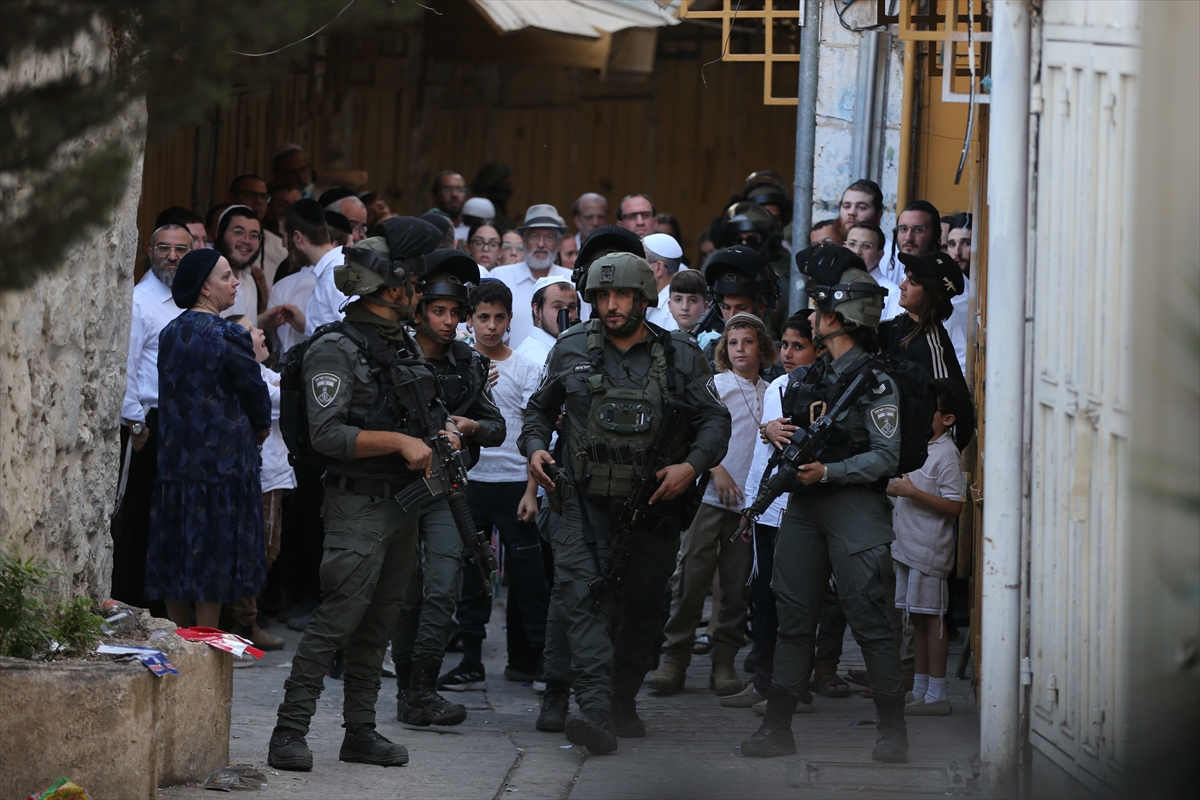
By Nadine Osman
London, (The Muslim News): Israeli forces killed two Palestinian brothers in an artillery strike east of Deir al-Balah in central Gaza on Friday, medical sources reported. Saeed and Masoud al-Ghawash died after being struck near al-Qastal Towers, highlighting dangers around Israel’s unmarked military boundary.
Local sources stated the brothers had crossed the so-called “yellow line,” a boundary designated by Israel under the current ceasefire, which began on October 10, to separate its eastern military positions from western “safe zones.” According to these sources, the line has no clear physical markings, leaving civilians exposed to direct targeting without warning. A previous statement by Gaza’s Civil Defense accused the Israeli army of deliberately targeting Palestinians who accidentally approach the line “in ways that are intended to kill.” The Israeli public broadcaster had earlier reported that, during a government discussion, far-right National Security Minister Itamar Ben-Gvir insisted on targeting Palestinians, including children, who approach this boundary. These incidents have reoccurred since the ceasefire began.
This incident follows a pattern of violations since the ceasefire began on October 10. According to a statement by the Gaza Media Office on October 19, the Israeli army had committed 80 ceasefire breaches up to that date, resulting in 97 Palestinian deaths. The ceasefire agreement mandated a partial Israeli withdrawal to new positions east of the yellow line, but, as of the latest developments, the Israeli army still controls 53% of Gaza’s territory, with further pullbacks scheduled for later stages. The violence on Friday coincided with other Israeli military actions, including the destruction of residential buildings southeast of Khan Younis and artillery shelling in eastern Deir al-Balah.
Parallel to the tensions in Gaza, the occupied West Bank witnessed a surge in violence throughout Friday and into Saturday. The unrest began on Friday with concurrent acts of destruction and confrontation. In Khirbet Tana, east of Nablus, illegal Israeli settlers vandalised a mosque and a school, while in a separate incident that evening, settlers attacked the village of Al-Mughayyir, northeast of Ramallah, setting fire to three vehicles. According to the village council head, Amin Abu Alia, residents confronted the attackers, forcing them to retreat before Israeli forces subsequently stormed the village.
Simultaneously, Israeli military raids unfolded across several towns on Friday. Forces injured dozens of Palestinians with tear gas and arrested four; in Beit Ummar, clashes erupted after troops stormed the area, and in Al-Bireh, a commercial building caught fire after soldiers fired stun and tear gas grenades at it. The violence continued into Saturday, when illegal Israeli settlers sprayed pepper gas at Palestinian farmers and solidarity activists in Kafr Malik, east of Ramallah, causing suffocation and burns.
The attacks on olive harvesters are part of a documented escalation, with the Wall and Settlement Resistance Commission reporting 141 such assaults since the season began. This recent surge fits into a broader pattern of violence; according to the same Commission, illegal Israeli settlers have carried out 7,154 assaults on Palestinians and their properties in the occupied West Bank over the past two years. This longstanding issue of settler violence and occupation exists within a specific legal framework. In a landmark opinion last July, the International Court of Justice declared Israel’s occupation of Palestinian territory illegal and called for the evacuation of all settlements in the West Bank and East Jerusalem.
Beyond the immediate violence, Gaza faces a long-term environmental and health crisis. A preliminary analysis by the UN Environment Programme (UNEP) has warned that the estimated 4.9 million tonnes of debris left by Israel’s two-year assault pose a serious health risk. Much of this rubble is contaminated with asbestos from old buildings. A further 2.9 million tonnes could be contaminated with hazardous waste from known industrial sites. The human cost of the conflict remains staggering. Israel’s war on Gaza has killed at least 68,280 people and wounded 170,375 since October 2023. A total of 1.5 million people require emergency assistance.
For individuals like 23-year-old Palestinian footballer Mohammed Fawaz Jundia, the destruction has been both personal and professional. He told Anadolu Agency that Israeli bombardment destroyed all sports and residential facilities. This has left Gaza in ruins. He stated that the damage makes it impossible for any athlete to continue playing sports. The loss for Jundia was profound. He confirmed he lost his father, his home, and his teammate in the bombardment. These losses forced him to end his football career. “Hopefully, the peace plan in Gaza will be implemented, the war will end, life will return to normal, and sports facilities will reopen,” he said. He added that his physical condition has weakened significantly after two years of war.
[Photo: Israeli forces takes extensive security measures as illegal Jewish settlers under Israeli military protection carried out a raid in the city of Hebron, occupied West Bank on October 25, 2025. Photojournalist: Wisam Hashlamoun/AA]